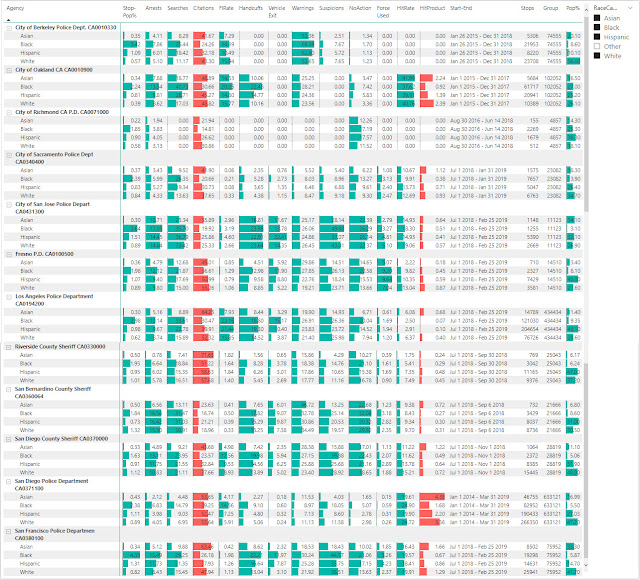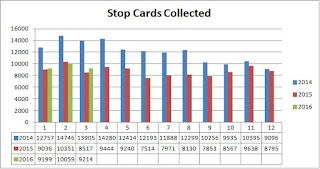Skin Game: James Comey's blind spot when it comes to Blacks.
The President of the United States of America must have read my letter (See below) since he is now talking about, precisely the same things. Comey, on the other hand, presides over an inept agency - which ineptitude allowed Dylan Roof to obtain his weapon- while he remains unable to characterize Dylan Roof as a terrorist, despite this:
<meburks@kpbs.org>, martiemerald@sandiego.gov
Cc: Shelly Zimmerman <sdpdpolicechief@pd.sandiego.gov>, kevinfaulconer@sandiego.gov, myrtlecole@sandiego.gov, Stuart Henry <stuart.henry2@gmail.com>, Joshua Chanin <jchanin@mail.sdsu.edu>, Sharmaine Moseley <SMoseley@sandiego.gov>, JGOLDSMITH@sandiego.gov
June 29, 2015
Richard Hylton
13166 Jane Court
San Diego, CA 92129
James Comey Jr.
FBI Headquarters
935 Pennsylvania Avenue, NW
Washington, D.C. 20535-0001
935 Pennsylvania Avenue, NW
Washington, D.C. 20535-0001
In or around springtime of this year, I listened with
interest to your address at Georgetown University[1]. As you
doubtless will recall, your remarks were in reaction to the publicized spate[2] of police
violence directed against Blacks or so-called minorities; people of colour is
the current expression.
I considered your remarks overdue and refreshing but must
comment that they betray an attitude that is not uncommon to those without
“skin in the game.” I say it is indicative of the attitude of someone who has
seen Blacks and other people of colour being incarcerated for longer periods
for the same crimes but did nothing about it. For me, it explains why you chose
not to use other, more current, truths
in your speech.
I have selected a relevant section of your comments and have embedded
it below:
“So why has that officer—like his colleagues—locked up so
many young men of color? Why does he have that life-shaping experience? Is it
because he is a racist? Why are so many black men in jail? Is it because cops,
prosecutors, judges, and juries are racist? Because they are turning a blind
eye to white robbers and drug dealers?
The answer is a fourth hard truth: I don’t think so. If it
were so, that would be easier to address. We would just need to change the way
we hire, train, and measure law enforcement and that would substantially fix
it. We would then go get those white criminals we have been ignoring. But the
truth is significantly harder than that.”
In the above evaluation, you are misguided and
mistaken and did not need to be either. I will use two examples, one example is
from this fine city; San Diego.
Example
1
On the night of
December 11, 2014 , a criminologist and professor from San Diego State
University presented findings of an analysis of Vehicle Stop Data for this fine
city to a gathering of more than 40 invited guests; community leaders. Distilled
to its essentials, SDSU academics found that Blacks and Hispanics were stopped
disproportionately, searched disproportionately and that race or ethnicity
appeared to be a determining factor in post-stop actions. The SDSU
Criminologist also noted that the Blacks and Hispanics were found to have lower
“Hit Rates” than other ethnic groups[3].
The final finding, on
“Hit Rates” caused a mild-eruption. Several of the community leaders
articulated the opinion that equated to “they are turning a blind eye to white (and
Asian) robbers and drug dealers?
Example
2
·
This is more facts, inside statistics,
fashioned or wrapped into an example rather than pure example. Several Judges
have refused (or have just come just
short of refusing) to hear cases where the drug defendant is Black of Hispanic.
And several have issued damning opinions on the matter.
o "New York has
completely lost sight of the true nature of the crimes involved. ... It is
difficult to believe that the possession of an ounce of cocaine or a $20
"street sale" is a more dangerous or serious offense than the rape of
a ten-year-old, the burning down of a building occupied by people, or the
killing of another human being while intending to cause him serious
injury," said Judge James L. Oakes, United States Court of Appeals
for the Second Circuit.
o New York's laws cause
disproportionate sentences because (1) "the classification of drug
felonies is based solely on the amount of the drug possessed or sold,"
lumping people with vastly different roles and culpability together in the same
felony class, (2) "the possession or sale of relatively small amounts
of controlled substances is classified as a felony of equal gravity as murder
or rape and is subject to the same sentences," (3) current drug laws
do not permit "judges to exercise their traditional function of ensuring
fair sentences," which restricts "their ability to divert nonviolent
offenders to substance abuse treatment programs, or to impose constructive
intermediate sanctions that are fair, safe, and effective alternatives to
prison," and (4) contrary to the argument that mandatory minimum
sentences help reduce sentencing disparities, "disparities continue
through the exercise of prosecutorial
discretion."
o The report speculates that
"it may be that disproportionate sentences for drug crimes have been
tolerated because convicted drug felons are primarily members of racial and
ethnic minorities." In New York, Blacks and Hispanics represent over 85%
of people indicted for drug felonies and 94% of drug felons sent to prison.
Blacks and Hispanics represent 17% and 12% of the state population,
respectively, according to the U.S. Census Bureau. "A predominantly white
state legislature has been insensitive to the rights and needs of people from
communities different from their own," the report says. "While
asserting concern for the harm drugs cause in poor communities, public
officials have ignored the hardship to individuals and their families from
unnecessary years of imprisonment."
Disparate
drug sentences have also persisted because state courts have not upheld federal
and state constitutional prohibitions on cruel and unusual punishment.
"Although these prohibitions extend to excessive sentences, few drug
offenders have succeeded in having disproportionately harsh sentences
overturned as unconstitutional," the report says. For example, New York's
highest court recently upheld a 15-years-to-life sentence imposed on a
17-year-old girl convicted of a single sale of 2 ounces of cocaine. The
high court has previously acknowledged that the "harsh mandatory treatment
of drug offenders ... has failed to deter drug trafficking or to control
the epidemic of drug abuse in society, and has resulted in the incarceration of
many offenders whose crimes arose out of their own addiction and for whom the
costs of imprisonment would have been better spent on treatment and
rehabilitation."
o And, in Massachusetts a
study from 1998 showed that Blacks and Latinos account for 85% of drug-related
sentences. The black and Hispanic state
prison admission rates for drug offenses are 39 and 81 times higher than the
white rate, respectively.
According
to the study, a person who lives in a neighborhood designated by the federal
government as an "extreme poverty" area, is 19 times more likely to
be incarcerated for a drug offense than someone who lives in a non-poverty
area. The study shows that in poverty areas, 1 in 6 adult minority men will experience
state prison incarceration before the age of 40.
Chief
Justice Robert Mulligan, who chairs the Massachusetts Sentencing Commission,
said the study makes a strong case for adoption of flexible sentencing
guidelines. The commission was formed by the state legislature to review
sentencing policy. Such flexible guidelines were proposed by the commission
last spring and may be implemented early this year, Mulligan said. "I was
shocked at how this study documents the impact these laws are having on
minority communities," Mulligan said. He added that he regrets the impact
mandatory sentences have had on nonviolent, low-level offenders. `'The impact
there has been devastating," he said.
o The Anti-Drug Abuse Act
of 1986 [5] created a massive imbalance of people of colour in America’s prisons. Whites,
who are said to be, more frequently, users of powdered cocaine (4:1 ratio) were
given far more lenient sentences than Blacks; said to be, more frequently, the users
of crack cocaine, who possessed lesser amounts (the 100:1 ratio).
I could go on but shall not,
since the actions and influence of police, prosecutors and Judges[6]
have been adequately addressed by the above.
I go
back to your observation on the activities, or indolence, of young men of
colour, residents of economically disadvantaged places, as compared to their
white counterparts who happen to live elsewhere; I offer this; social
scientists and others claim that it is indisputable that the presence of
fathers (and mothers) is a major influence on the conduct of offspring. Where
are their fathers (and mothers) you could and should have asked? I ask and I
answer, “they are in prisons at a rate 39 and 81 times
higher than the white rate, and are or were there for longer periods than whites.
I salute the
courageous judges who have apologized for or have refused to play along with
the documented abominations (as I apologize to some of the San Diego 40 for my
comments.).
Sir; I regret that you chose not to
include facts from the above examples in your address. They, or similar ones, were
available to you, in massive abundance and accordingly I am compelled, with all
due respect, to re-title your address, Half-truths-law-enforcement-and-race. All in all,
your address amounts to an observation that the complainants are subjected to
abuse, that sometimes results in death, because they are poor and because
policemen, like all people, have biases. That sir is legally and morally
unacceptable.
Unlike you, I am
said to have descended from a famous rioter and am privileged to live in
America’s Finest City where the police are taught that Racial Profiling is
not Racism.[7]
Richard
Hylton
13166 Jane Court
San Diego, CA 92129
Cc by email
to:<meburks@kpbs.org>, martiemerald@sandiego.gov
Cc: Shelly Zimmerman <sdpdpolicechief@pd.sandiego.gov>, kevinfaulconer@sandiego.gov, myrtlecole@sandiego.gov, Stuart Henry <stuart.henry2@gmail.com>, Joshua Chanin <jchanin@mail.sdsu.edu>, Sharmaine Moseley <SMoseley@sandiego.gov>, JGOLDSMITH@sandiego.gov
[1] Hard-truths-law-enforcement-and-race
[2] Spate is not accurate, the abuse is merely being
recorded now.
[3] My scalar evaluation showed
similar obscene results in far more categories.
[5]
The Fair
Sentencing Act of 2010 (Public
Law 111-220) need not be discussed here. Neither eggs not the skulls of
thin-skulled men may be unbroken
[6]
U.S. District Court Judge
Lyle E. Strom told two defendants on November 20 after giving them
the sentence provided in the Sentencing Guidelines for crack cocaine offenses,
"I apologize to you on behalf of the United States Government." And
in January 1995, Senior U.S. District Judge John T. Curtin (Western
District of New York) announced that he would no longer hear drug cases,
because of his disagreement with drug sentencing policies.
I salute the courageous ones that have
apologized for or have refused to play along with the abominations. The others
are cowards.
[7] https://youtu.be/aOWN2JKMtBc


Comments
Post a Comment